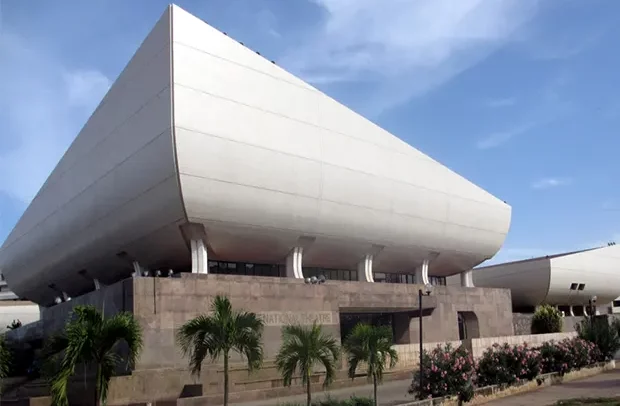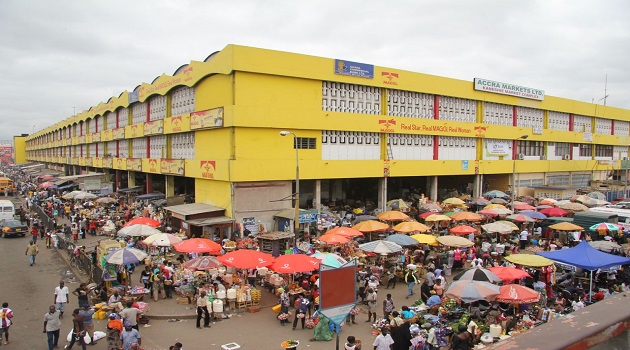
Approximately five years ago, the United Nations (UN) designated every 31st of October as World Cities Day. The Day was established on December 27, 2013, by the General Assembly in its resolution A/RES/68/239, in which it selected October 31, beginning in 2014, as World Cities Day, and invited member states, and relevant international organisations and stakeholders to observe and raise awareness of the Day.
The World Cities Day is aimed at promoting the international community's interest in global urbanisation, push forward cooperation among countries in meeting opportunities and addressing challenges of urbanisation, and contributing to sustainable urban development around the world.
AFD's urban development project
According to forecasts, 65 per cent of Ghana's population will be living in urban areas by 2030 (51.5 per cent in 2010). Apart from that, the population is expected to double by 2040. This rapid urban growth puts pressure on both the country's main cities and secondary urban centres. This population concentration has led to a rise in undesirable effects like increase in congestion, polluting emissions, solid and liquid waste management, the proliferation of informal neighbourhoods and urban poverty; not to mention the pressure that this exerts on the existing infrastructure and services.
In order to bridge the infrastructure gap due to the above phenomenon, Agence Française de Développement (AFD) supported the Government of Ghana with a credit facility amounting to 40 million euros and a grant of 0.5 million euros for the Ghana Urban Management Pilot Project (GUMPP). Generally, the project consists of the development of urban infrastructure, their maintenance and capacity building, tailored to the needs of each of the four cities of Kumasi, Sekondi-Takoradi, Tamale and Ho. For these four cities, the Assemblies were given the liberty to choose the projects to be financed, based on their priority needs as defined in their strategic plan.
Focus on the Tamale project
The project is almost completed in all the four cities enumerated above. However, for the purpose of this article, we would like to focus on the Tamale project. This is because of its importance in helping to bridge the gap that exists between the South and the North of the country. Moreover, Tamale is full of potentials, be it in terms of the natural or the human resources. For AFD, providing the right environment and the financial resources in tandem with government's policies is a priority, especially when this will help to avoid negative repercussions that arise out of economic and social inequalities.
Construction of Aboabo market
The Aboabo market happens to be one of the biggest markets in Tamale. However, it was saddled with the lack of properly demarcated stores and the ground was just too muddy. As a result of that, on rainy days, people could not patronise the market. They would rather go to shops outside the market with better roads, to buy their wares, resulting in the loss of revenue for the women whose shops are inside the market.
Under the GUMPP project, 72 stores were built and allocation made to the market women. Moreover, the floors have been adequately paved which makes it easy for both customers and vehicles to move in and out of the market. Due to the rehabilitation of the Savilugu Lorry Park (within the market) which is one of the key lorry parks in the area, it is now easy for vehicles to access the market to offload wares belonging to the market women. Their customers who left the market in the past have fully returned. According to Madam Hamdiya Iddrisu, one of the market women, this has increased their economic activity leading to higher sales. "Due to increased income, we can now afford to take our children to school," she said.
Community upgrade
Another component of the project is the upgrade of two adjoining communities, namely: Tishiegu and Mossi Zongo (the Tamale-Bolgatanga road passes through these two communities). These communities are right in the city centre (that is the central business district) and close to the Aboabo community which was already upgraded. Under the project, the main roads were tarred and gutters constructed along those roads. In the past, it took so long to ply the road from one end to the other. When it rained, due to the muddy nature of the roads, no activity could take place. People found it difficult to go through the mud; the streets were empty and so shop owners did not see the need to open their shops.
With the upgrade of these two communities, people who drive through the city have the possibility of diverting to other parts to do business without the usual traffic. This gives them easy access to their various destinations.
Also, whether rain or shine, shops are open for people to venture out of their homes to purchase whatever they needed as well as go about their normal economic activities. Moreover, people now spend less time on the road which helps them to use their time to do productive ventures that put money in their pockets.
As stated by the Assemblyman for Salamba, Mr Mahama Abdalla, pregnant women who, during emergency cases, had difficulties getting vehicles to take them to the hospital due to the deplorable nature of the roads are now spared the ordeal of going to the hospital on motorbikes; a cumbersome and dangerous undertaking. The pregnant women now have easy access to health facilities. "This has helped to reduce, not only the mortality rate for pregnant women but also foetal mortality rate," he added.
In the past, during a fire outbreak for instance, it was difficult for the fire service van to reach the source of the fire due to the haphazard siting of houses, some of them wood structures. Under the project, people's wooden structures were developed into proper brick structures; and wrongly sited homes realigned to form a standard neighbourhood, well delineated with access routes. As testified by Mr Mahama Abdalla, recently during a fire outbreak, the fire service van was able to access the road leading to the house in question and it was quickly contained. It would have spread to adjoining homes had it not been for this segment of the project.
Improved drains
The Initial plan was to line 0.75km of the Gumani drain (transforming it into a storm drain), dredge another part of the drain and do a box culvert as well as a number of foot bridges. However, after re-scoping, a decision was made to increase the length of the drain to 1.1km due to the severity of flooding in the area (the lined box culvert) and do two-foot bridges with the same budget.
According to Mr Sylvanus Adzornu, the National Project Coordinator, sanitation being a major problem in Tamale and because the core mandate of the Metropolitan Assembly is to take care of sanitation problems within its jurisdiction, this segment of the project was considered very crucial for the development of the area. This is because the poor sanitation actually contributed to the annual flooding in the city - gutters were chocked since people did not have places to safely dispose of rubbish, nor was there an organised rubbish collection system.
"The main objective of the GUMPP Project in Tamale is the alleviation, if not eradication of the problem of perennial flooding (with flood water reaching up to window level). This was an annual occurrence that used to destroy people's property and in most cases resulting in the loss of lives. People could not stay in their homes in the area, during the rains; and a lot of properties were lost as a result of perennial flooding," Mr Ahmed Abdul Rahman, the Tamale Project Coordinator also stated.
Initially drivers used to drive the vehicles through the drain at the point where there was a hardpan, endangering their lives and that of their passengers. Currently however, provision has been made for a box culvert and a secure bridge was constructed for vehicular access. After constructing the drains, there has not been any report of flooding in the area and people are free to go about their activities during the rains without fear of losing their lives or the fear of cholera outbreak. This undoubtedly has resulted in the improvement in the health of the inhabitants.
Abattoir and youth employment
Slaughtering of animals was done at an area which was not confined, the roofing sheets of which either leaked profusely or were ripped off during rainfalls. Moreover, the floor was not plastered and there was no toilet facility; to compound the situation, there was no water. They had to rely on tanker drivers to bring them water which lasted for only three days.
Under the project, the abattoir was partly refurbished, including the provision of the slaughter house and access to clean water. Some young people in the area have seized the opportunity of the refurbishment of the abattoir to bring animals from other markets for the slaughter house. This creates a source of income for these young men who hitherto used to loiter around the market.
According to Mr Abdul Rashid Mummuni, the President of the Association of Butchers, the whole development has also increased the sale of livestock in the market because people are confident that they will get a safe place to slaughter their animals so they prefer buying from there. And as they go buying animals they also do their other shopping in the market leading to an overall increase in economic activity in the market.
Challenges
Due to the dynamics of the market, all the needs have not been met at the Aboabo market. The funds allocated for the construction of the 72 stores were not enough to meet the growing demand that shot up to 140. For that matter, some market women still sell their wares on tables in the open space in the market square. This practise has compelled even those who already have stores to come out into the market square to sell, in order to beat the competition that is developing out there.
Moreover, there was a challenge with two main amenities that would have yielded maximum benefits for the beneficiaries of the GUMP project. Indeed, in order to guarantee quality meat for the consumer, the acquisition of a meat van is essential. So far, neither the managers nor the Butchers' Association have been able to make this investment. If this is not addressed, it could derail the successes chalked in terms of sanitation; not to mention the fact that this could affect the revenue of the butchers.
Even though the first phase of the biogas plant that is supposed to treat the waste generated at the abattoir has been built, it is not big enough. The Municipal Assembly should complete the second phase early enough to bridge the gap between the generation of waste and its disposal. If this is not done, solid waste from the abattoir could find its way into water bodies, resulting in water borne diseases which would offset the remarkable gains made on the health front.
Benefits
According to the MCE of Tamale, Hon. Iddrisu Musah Superior, the GUMPP project is a typical project that addresses challenging issues at the local level, thus helping to boost the decentralised system in Ghana. The roads constructed in Mossi Zongo have changed lives. All these have helped the people to be business oriented and the economic value of the people has increased. "Their life expectancy has also increased because they are able to educate their children and sanitation has improved due to the provision of the drainage - the chiefs and the local people are happy about the change," he added.
The general theme of World Cities Day is: "Better City, Better Life", while each year a different sub-theme is selected, to either promote successes of urbanisation, or address specific challenges resulting from urbanisation. The first World Cities Day was celebrated in Shanghai, China on October 31, 2014, under the theme, "Leading Urban Transformations". This year's theme is: "Building Sustainable and Resilient Cities", and the global observation will be celebrated in Liverpool in the United Kingdom.
The idea behind the selection of this year's theme is relevant. According to the United Nations, cities need support to become resilient and develop their capacity to absorb the impact of hazards, protect and preserve human life and limit damage to and destruction of public and private assets while continuing to provide infrastructure and services after a crisis.
Read Full Story





















Facebook
Twitter
Pinterest
Instagram
Google+
YouTube
LinkedIn
RSS